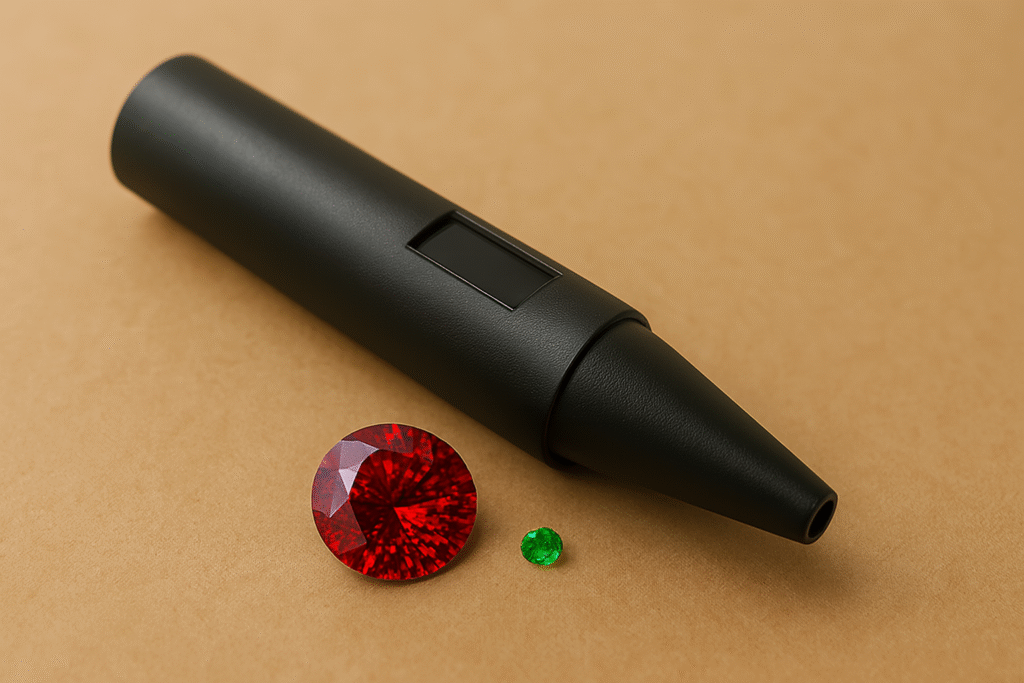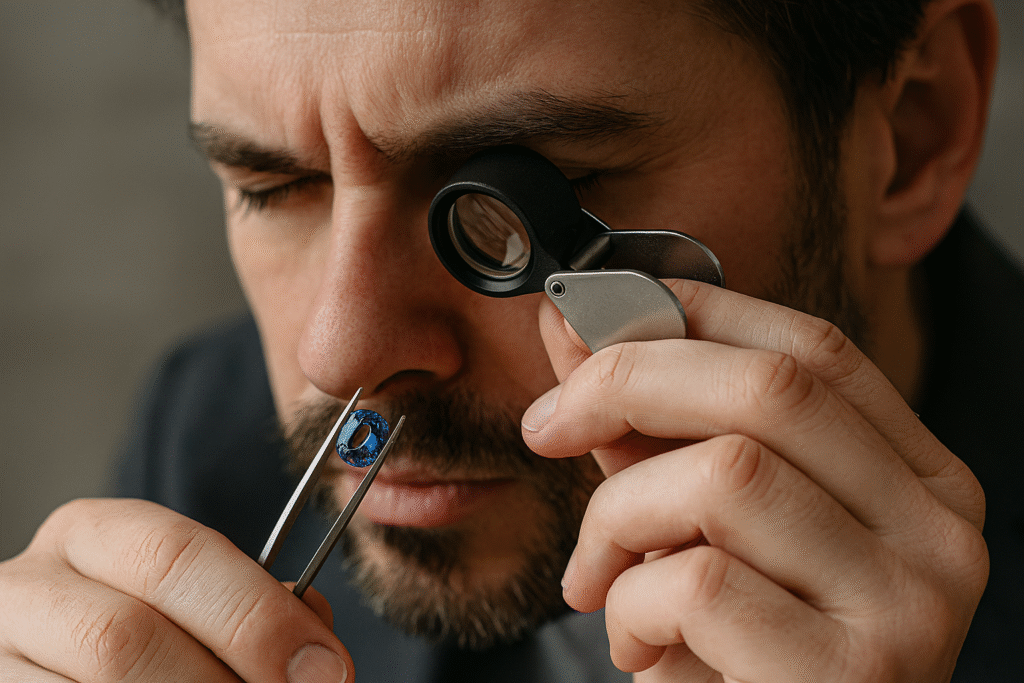Learn how to use a spectroscope in gemology. Discover how this simple tool separates rubies, garnets, spinels, and jadeite by revealing absorption spectra.
Spectroscope: A Simple Tool with Powerful Results
The spectroscope is one of the most compact instruments in gemology.
All you need is a portable light source.
With it, you can:
- Separate red garnets from rubies and red spinel
- Distinguish synthetic blue spinel from aquamarine and blue zircon
- Tell dyed jadeite from natural chrome-colored jadeite
How the Spectroscope Works
The spectroscope splits white light into its component colors.
These appear as red, orange, yellow, green, blue, and violet.
There are two common types:
- Prism spectroscope – uses a set of prisms
- Diffraction grating spectroscope – less costly and uses a grating with fine etched lines (up to 1000 per millimeter)
Although multiple spectra may form, you only use the strongest one.
Why It Matters in Gemology
When light passes through or reflects from a gemstone, the stone absorbs certain wavelengths.
The spectroscope spreads this light into spectral colors.
Dark lines or bands appear where absorption happens.
This creates a unique absorption spectrum.
Each gemstone species can show its own pattern.
That makes the spectroscope a reliable tool for identification.
What You Need for Proper Viewing
A concentrated light source is essential.
A pocket torch with a focused beam works well and is affordable.
Questions to Ask Yourself
- Can you recognize the absorption lines in a ruby compared to a garnet?
- Have you compared spectra of natural jadeite and dyed jadeite side by side?
- Are you carrying a torch in your gem kit to get accurate results?
A practical guide to using the spectroscope in gemology. Explains how the instrument works, how to read absorption spectra, and how it helps you identify gemstones.
- Material Aluminum (Durable)
- Item Weight: 1.41 ounces
- Made of aircraft aluminum and finest optics




